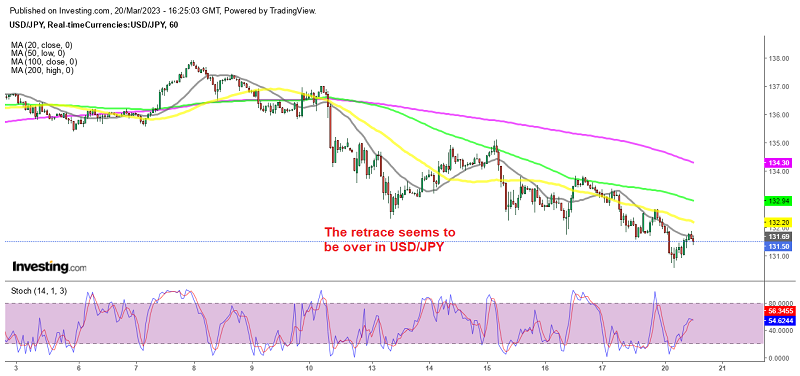Risk Sentiment Improves on As ECB Officials Do the Talk on Banking Issues
Risk assets are making a small comeback while safe havens are retreating as sentiment improves on central banks trying to calm markets down

Today financial markets continue to experience a lot of volatility. Credit Suisse shares opened over 60% lower, and European banking stocks were down around 5%, before recovering slightly to just under 2%. Major stock markets also fluctuated, with the S&P 500 futures initially dropping 50 points before paring back to just 4 points down.
This was a positive start to the day in Asia after the takeover of Credit Suisse by UBS and major central banks working together to improve liquidity conditions. However, this sentiment changed as the European markets opened and fears resurfaced, resulting in a risk-off move with bond yields and equities selling off. As a result, there was a gap lower in risk trades when Europe opened, with 2-year German bond yields falling by over 30 bps immediately.
ECBs Lagarde Speaking Earlier:
- Wage pressures have strengthen on the back of a robust labor markets, and employees aiming to recoup some of the purchasing power
- Inflation is projected to remain at too high for too long
- The key ECB interest rates remain our primary tool for setting the monetary policy stance
- We are very confident that capital and liquidity positions of the euro area banks are well in excess of requirements
- Financial tensions might dampen demand, do some of the work that would otherwise be done by monetary policy
- Without tensions, we would have indicated that further hikes would be needed
- Latest developments in European banking sector give us confidence in the decisions taken
- This inflation we experience today has much of its origin from the supply side
Last week, the European Central Bank (ECB) raised its rates by 50 basis points, which may serve as a blueprint for the US Federal Reserve’s decision on Wednesday. The Fed is still concerned about inflation, which remains above the target rate, and the ECB argued that they have tools to address financial and monetary policy concerns. However, financial issues can quickly spiral out of control and lead to disinflation.
Currently, it seems that a compromise for the Fed would be a 25 basis point hike. Rates in the US have started to move back up after being lower earlier, with the two-year yield at 3.928% and the 10-year yield at 3.471%. While these rates are still below the 4% level, they have increased by 8.2 and 7.5 basis points, respectively. Meanwhile safe havens have retreated lower, with Gold back below $2,000 and we decided to open another buy Gold signal around $1,970. USD/JPY pulled back up but the retreat in safe havens seems to be ending now, so we also opened a sell signal in USD/JPY.
- Check out our free forex signals
- Follow the top economic events on FX Leaders economic calendar
- Trade better, discover more Forex Trading Strategies
- Open a FREE Trading Account


